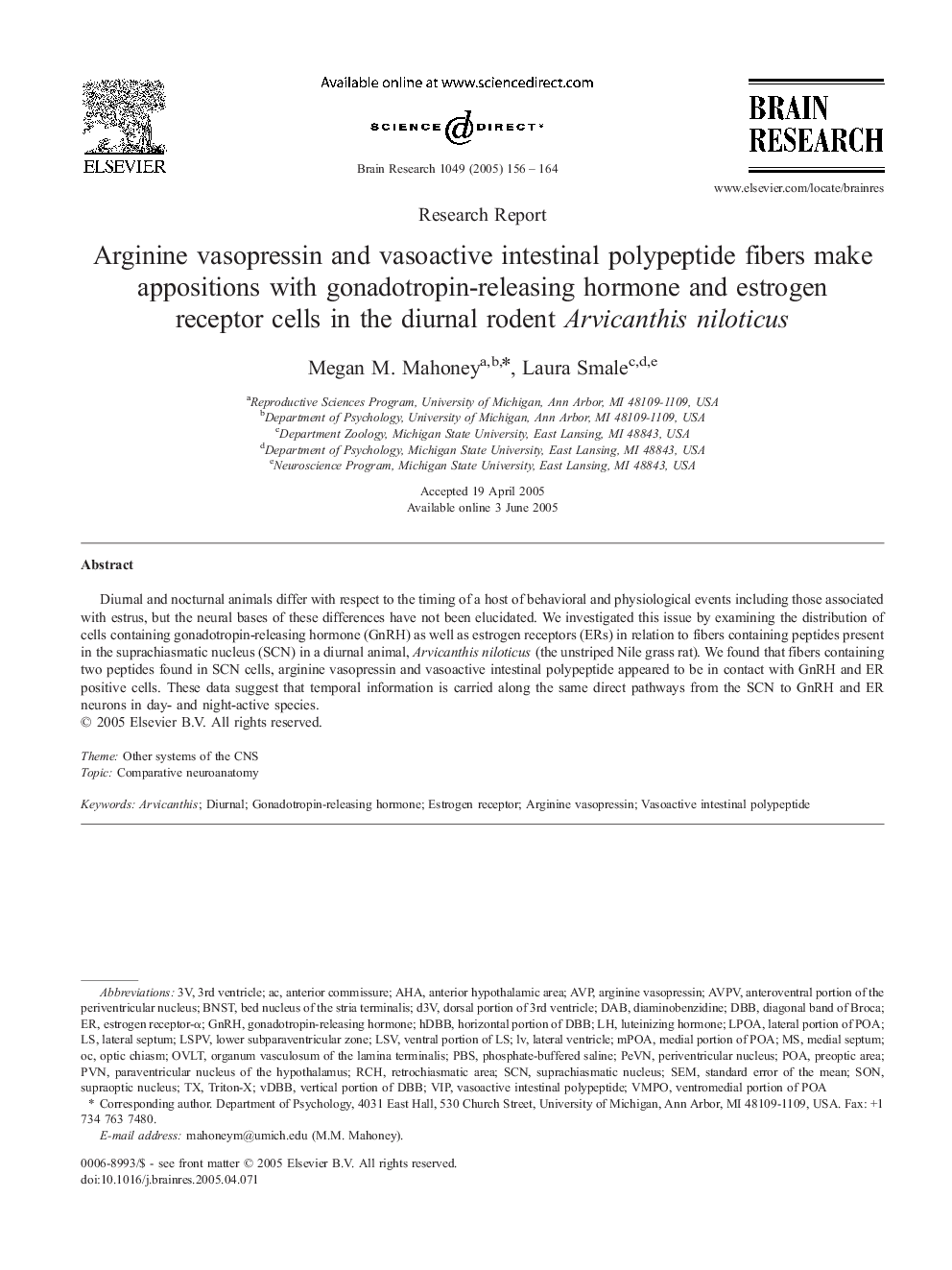| Article ID | Journal | Published Year | Pages | File Type |
|---|---|---|---|---|
| 9416153 | Brain Research | 2005 | 9 Pages |
Abstract
Diurnal and nocturnal animals differ with respect to the timing of a host of behavioral and physiological events including those associated with estrus, but the neural bases of these differences have not been elucidated. We investigated this issue by examining the distribution of cells containing gonadotropin-releasing hormone (GnRH) as well as estrogen receptors (ERs) in relation to fibers containing peptides present in the suprachiasmatic nucleus (SCN) in a diurnal animal, Arvicanthis niloticus (the unstriped Nile grass rat). We found that fibers containing two peptides found in SCN cells, arginine vasopressin and vasoactive intestinal polypeptide appeared to be in contact with GnRH and ER positive cells. These data suggest that temporal information is carried along the same direct pathways from the SCN to GnRH and ER neurons in day- and night-active species.
Keywords
DABLPOAretrochiasmatic areaVMpotriton-XGnRHArvicanthisDBBRCHD3VLSPVOVLTMPOASCNBNSTAVPPBSPOALSVAHAVIPAVPVorganum vasculosum of the lamina terminalislateral ventricle3rd ventriclestandard error of the meandiaminobenzidineDiurnallateral septummedial septumOther systems of the CNSComparative neuroanatomySONPVNPhosphate-buffered salineSEMPreoptic areaanterior hypothalamic areaSupraoptic nucleusbed nucleus of the stria terminalisparaventricular nucleus of the hypothalamusperiventricular nucleusSuprachiasmatic nucleusGonadotropin-releasing hormoneluteinizing hormonearginine vasopressinVasoactive intestinal polypeptideoptic chiasmanterior commissureDiagonal band of BrocaEstrogen receptorEstrogen receptor-α
Related Topics
Life Sciences
Neuroscience
Neuroscience (General)
Authors
Megan M. Mahoney, Laura Smale,
